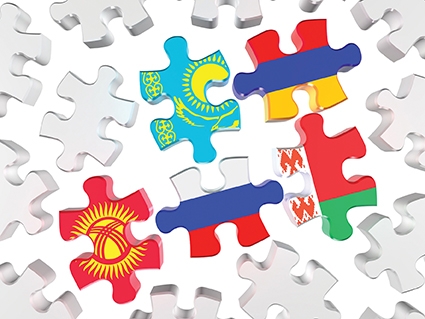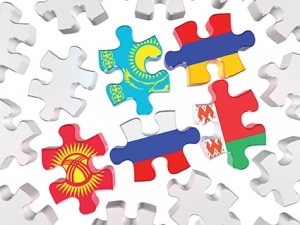The Eurasian Economic Union Will Remain Fundamentally Weak
Op-ed
Georgia is located in a complex region. Its neighbors share different foreign policy vectors and are at different stages of economic development. Over the past several months I have written on Georgia’s neighbors and how they impact the country’s development. This time I will focus on the Eurasian Economic Union (EEU) and what the strengths and weaknesses are of the grouping. The EEU has existed for more than two years and it is the time to ponder on what it means for Georgia to border it.
Russia has been trying since the 16th century to attract and dominate its smaller neighbors; to position itself as a Eurasian power. Throughout centuries, the unchanged imperative remained the creation of buffer states all along its borders.
The creation of the EEU reflects this Russian geopolitical imperative: the imperative through which any western economic or military encroachment on the former Soviet space would be, if not forestalled, then considerably constrained. Indeed, the creation of the Union (although economics does play a big part in it) is also about further enabling Russia to solidify its influence over Belarus, Kazakhstan, Armenia and Kyrgyzstan. Beyond trade, the countries also discuss security, military affairs and other vital spheres of cooperation. The overall idea, however, if not openly stated, has been to place the Eurasian Union on the one hand as a balancer to the European Union and its enlargement in east Europe and on the other as an equal partner to the Chinese and its project dubbed Belt and Road Initiative (BO) introduced in 2013.
The EEU has some of strategic advantages. Altogether, the grouping has a population of almost 179 million people. The gross domestic product nears $1.9 trillion. This is much lower than what the EU or BO has. Another advantage is the size and borders of the Union which almost correspond to former Soviet Union’s borders. This enables Russia to project its influence over large swathes of lands and, like NATO in the west, potentially use its Collective Security Treaty Organization as a shield against various security challenges emanating from the Central Asian region or in the South Caucasus.
Another advantage is the Union’s geographic scope. A glimpse at the Eurasian map shows that the EEU is well positioned between two economic powerhouses: Europe and East Asia, especially considering the large strides China is making in expanding and implementing its initiative. Indeed, several major economic corridors through which China wants to connect to the European market go via Kazakhstan and south of Russia.
Challenges
Despite initial success in managing to draw Armenia and Kyrgyzstan in 2015 into the EEU, the expansion of the grouping has stalled. There are several reasons for that. When Russia launched the Union in 2015, the country had been hit by a recession because of low oil prices and sanctions imposed against the Kremlin’s involvement in the Ukraine crisis and the annexation of Crimea. The Russian economy contracted by 3.7% in 2015. Ukraine was lost and with it its rich business market and large population pool. What is more problematic is that the economic crisis in Russia had a significant spillover effect on other members of the Union, thus further endangering the viability of the grouping. The reason is clear, as Russia accounts for the vast majority of the economic and population clout of the Union: 143 million citizens and a $1.6 trillion GDP.
Another big hit to the prestige of the Union happened in 2015 when several former Soviet states such as Ukraine, Moldova and Georgia, instead of even considering joining the Union, instead signed Association Agreements with the EU.
Beyond these pro-European countries, even those former Soviet states which sought a neutral position in the standoff between Russia and the West hesitate to join the Eurasian Union. The reason is simple, as Russia's clout within the Union causes concerns among potential members. In the South Caucasus, Azerbaijan aims at pursuing the policy it has been following since the end of the Soviet Union without committing itself to any of the major alliances. Azerbaijan in the EEU will be too much of direct Russian influence to bear for Baku.
The same goes for Uzbekistan and Tajikistan. Occasionally media reports claim that Dushanbe and Tashkent talk about their potential involvement in the Union, but so far, expectations have fallen far short of real action. The reason is the same: Russia’s economic and military dominance within the Union is overbearing. Moreover, both Central Asian states are looking at Kyrgyzstan, whose economy did not fare well following entrance in the EEU.
Thus, the EEU will continue to face economic as well as political challenges as the grouping and will struggle to sign up new members, while the existing member states will reel from Russian economic and military dominance. Moreover, beyond the five members, other former Soviet Union states are unlikely to seek to join anytime soon.
Emil Avdaliani











